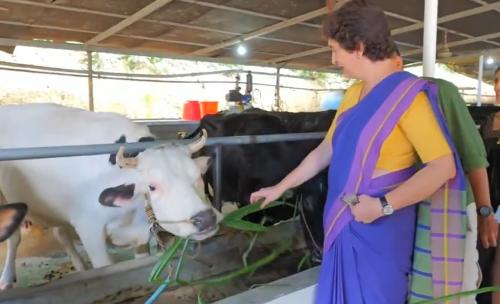The recent floods across Punjab have once again exposed the vulnerability of the state’s agriculture sector to climate change and the inadequacy of existing relief mechanisms. Farmers, who have faced successive years of losses due to erratic weather, are intensifying their demand for a robust crop insurance framework that can provide genuine protection against disasters.
Punjab’s dependence on wheat and paddy cultivation has made it particularly sensitive to even minor climatic fluctuations. In 2022, a sudden temperature spike just before harvest wiped out significant portions of the wheat crop, while this year’s torrential rains in July and August submerged vast stretches of farmland. Paddy, a water-intensive crop, was severely affected as waterlogging and delayed sowing amplified losses. Farmers estimate their average loss at nearly three times the ₹20,000 per acre compensation announced by the state, with damages extending beyond crops to livestock and homes.
The state’s current relief model has drawn criticism for its piecemeal approach. Compensation packages, while politically significant, fall short of covering actual losses and fail to address the structural risks inherent in modern farming. Moreover, disaster relief is often unevenly distributed, leaving small and marginal farmers particularly vulnerable. This gap between relief and real damage has heightened demands for crop insurance that is both universal and state-subsidized.
Punjab already falls under the ambit of the Centre’s Pradhan Mantri Fasal Bima Yojana (PMFBY), but structural flaws have limited its effectiveness. Coverage is provided only if a large percentage of villages in a block report damage, meaning many individual farmers are left without benefits despite severe losses. In addition, insurance premiums are partly borne by farmers, adding financial strain in a sector already under pressure. Critics argue that the scheme has ended up serving insurance companies more than the farming community.
The situation highlights a deeper policy gap. Agriculture in Punjab is increasingly threatened not only by floods but also by unseasonal rains, extreme heat, and even fire incidents. Yet disaster response remains focused on short-term relief rather than systemic risk management. Experts emphasize that a reliable, fully subsidized crop insurance model—covering all farmers and all acres—is essential for long-term agricultural resilience. Without it, Punjab’s farming households will remain locked in a cycle of loss, debt, and dependence on inadequate compensation.
The floods of 2025 serve as a stark reminder that climate volatility is no longer an exception but a norm. For Punjab’s agrarian economy, survival now hinges less on compensation announcements and more on whether policymakers can design a sustainable safety net that shields farmers from recurring disasters.








